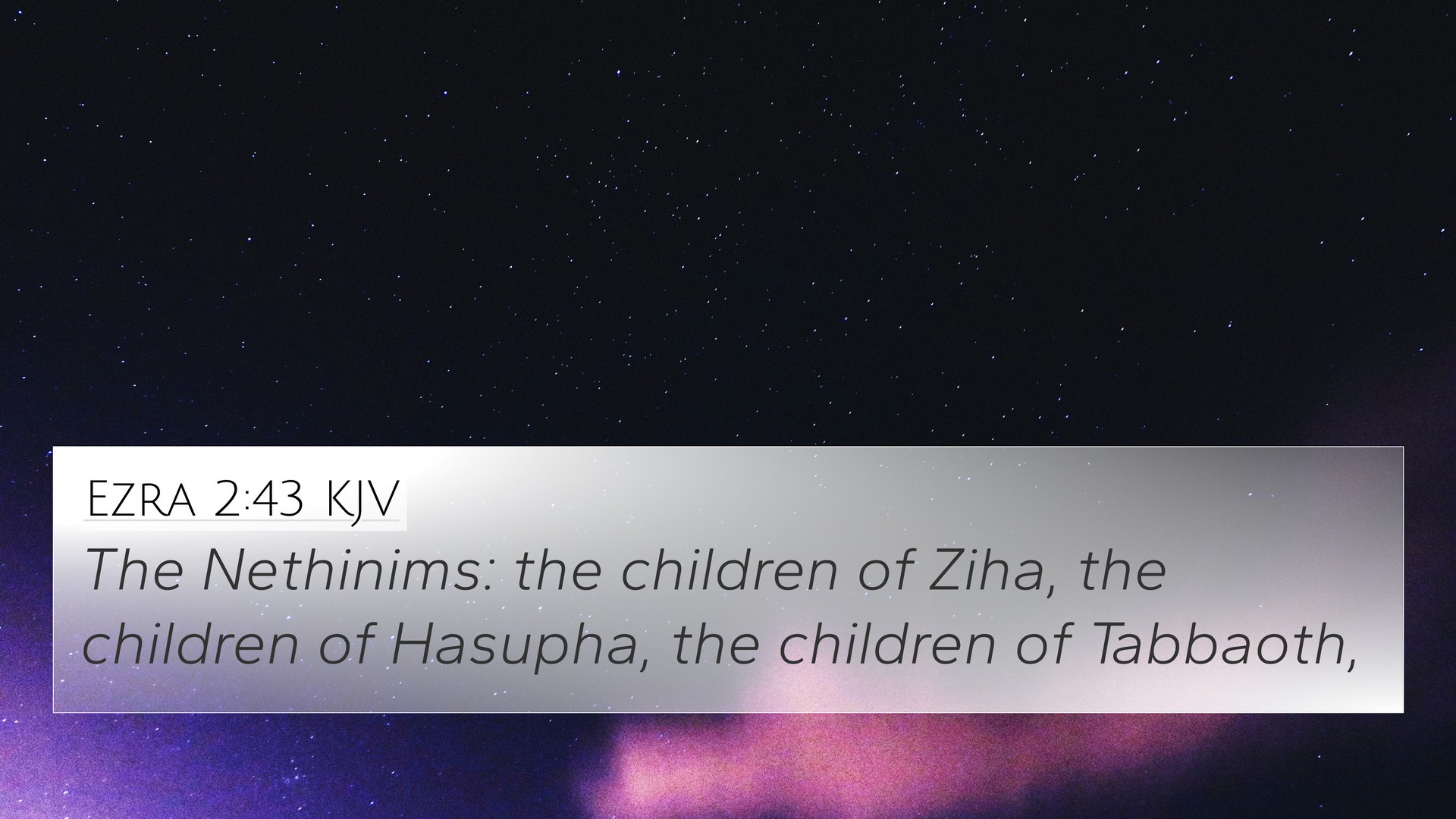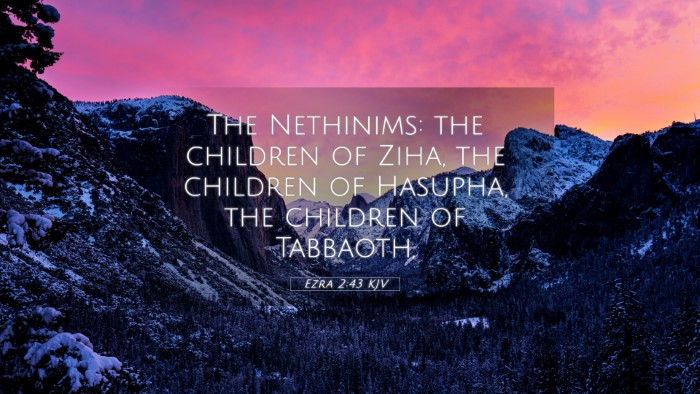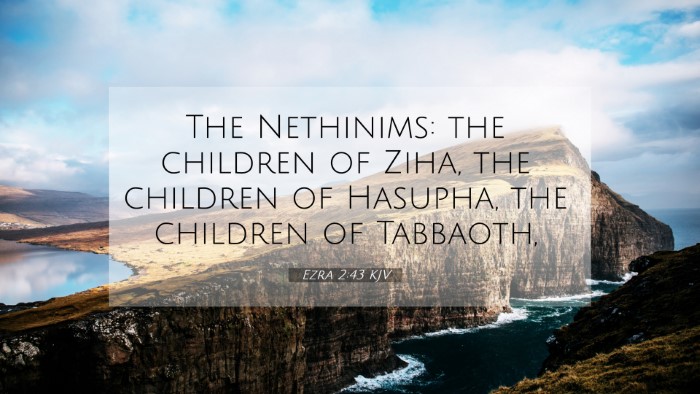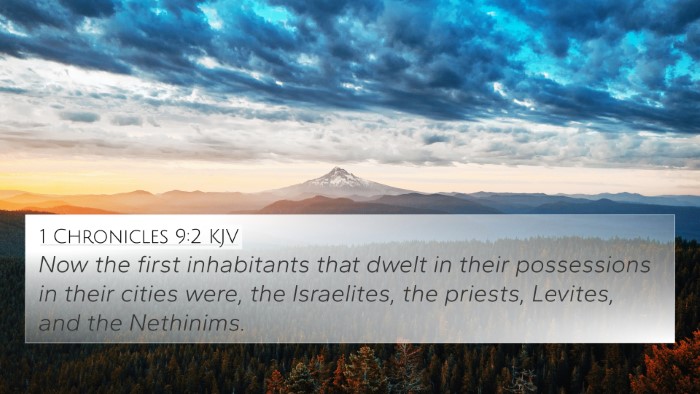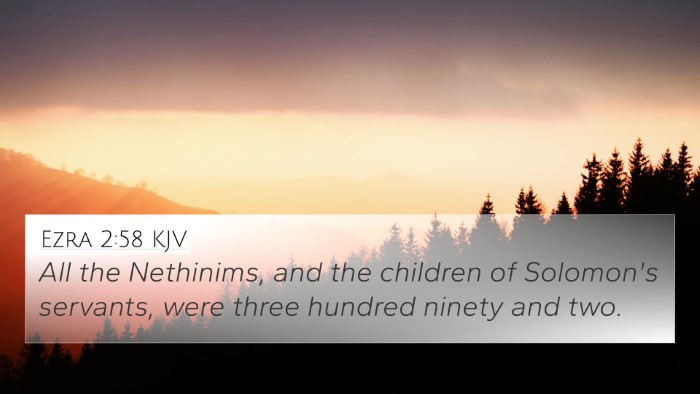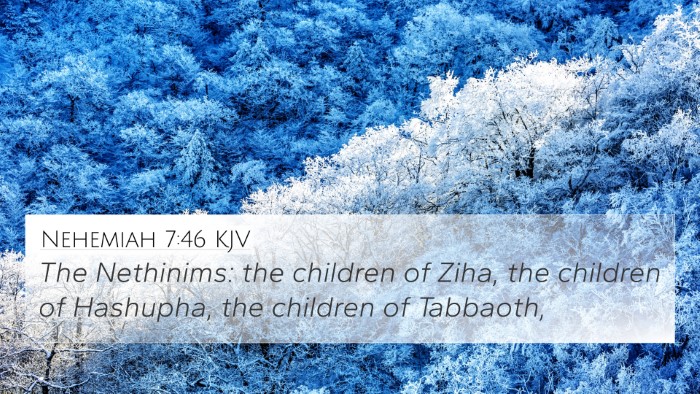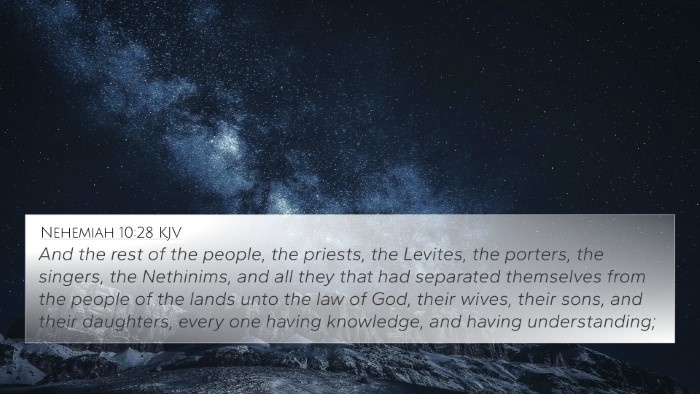Understanding Ezra 2:43
Ezra 2:43 states: "The Nethinim: the children of Ziha, the children of Hasupha, the children of Tabbaoth." This verse lists specific groups among the exiles returning to Jerusalem, highlighting the importance of all people who contributed to the service of the temple.
Historical Context
The book of Ezra details the return of Jewish exiles from Babylon, initiating the restoration of the Temple and Jerusalem. This particular verse references the Nethinim, a class of temple servants who were allocated specific roles in the house of God.
Commentary Insights
- Matthew Henry: Henry notes that the inclusion of the Nethinim highlights the diversity of those who served God. They were originally Gibeonites who became servants for the temple, showing that even those from non-Israelite backgrounds could serve a significant role in God’s plan.
- Albert Barnes: Barnes points out that the listing of specific families signifies an organized structure of service. The Nethinim were important for the temple’s functions, and the mention of their names fosters a sense of identity among the people who returned.
- Adam Clarke: Clarke emphasizes the role of the Nethinim in preserving the worship and sacred rituals of the temple. Their dedication can be seen as a means of ensuring continuity of worship traditions among the returning exiles.
Bible Cross-References
- Joshua 9:27 - The Gibeonites, from whom the Nethinim descend, become hewers of wood and drawers of water for the congregation.
- 1 Chronicles 9:2 - Acknowledges the Nethinim among the Levites and the importance of their roles in the temple service.
- Ezra 7:24 - Articulates the organized structure of temple service, where Nethinim are mentioned as servants set aside for the sanctuary.
- Nehemiah 3:26 - Relates to the Nethinim helping to rebuild the wall of Jerusalem, highlighting their active role in restoration efforts.
- 2 Chronicles 8:7 - Discusses how Solomon made provisions for the Nethinim as part of his establishment of the temple service.
- Ezra 8:17 - Shows the efforts of Ezra in gathering those who would serve in the temple, indicating the integration of various groups, including the Nethinim.
- Psalms 68:31 - Although not direct, it reflects God's care for all people, resonating with the inclusive nature of the Nethinim's service in the temple.
Thematic Bible Verse Connections
This verse does not stand alone; it fits into a larger narrative that showcases God's inclusion of all groups in His plans for restoration. The Nethinim represent service, dedication, and the unity of believers in worship.
By analyzing Ezra 2:43 alongside these cross-references, one uncovers a robust theme of community involvement in spiritual service and the diverse ways believers contribute to the life of the church and the worship of God.
Conclusion
The significance of Ezra 2:43 lies in its representation of God's inclusive call to service and the acknowledgment of every individual's contribution to His work. The Nethinim exemplify faithfulness and dedication, encouraging contemporary believers to recognize and participate in the diverse roles within the body of Christ.
For further study: Utilizing tools for Bible cross-referencing, such as a Bible concordance, can deepen understanding by revealing the intricate interconnections of scripture.
